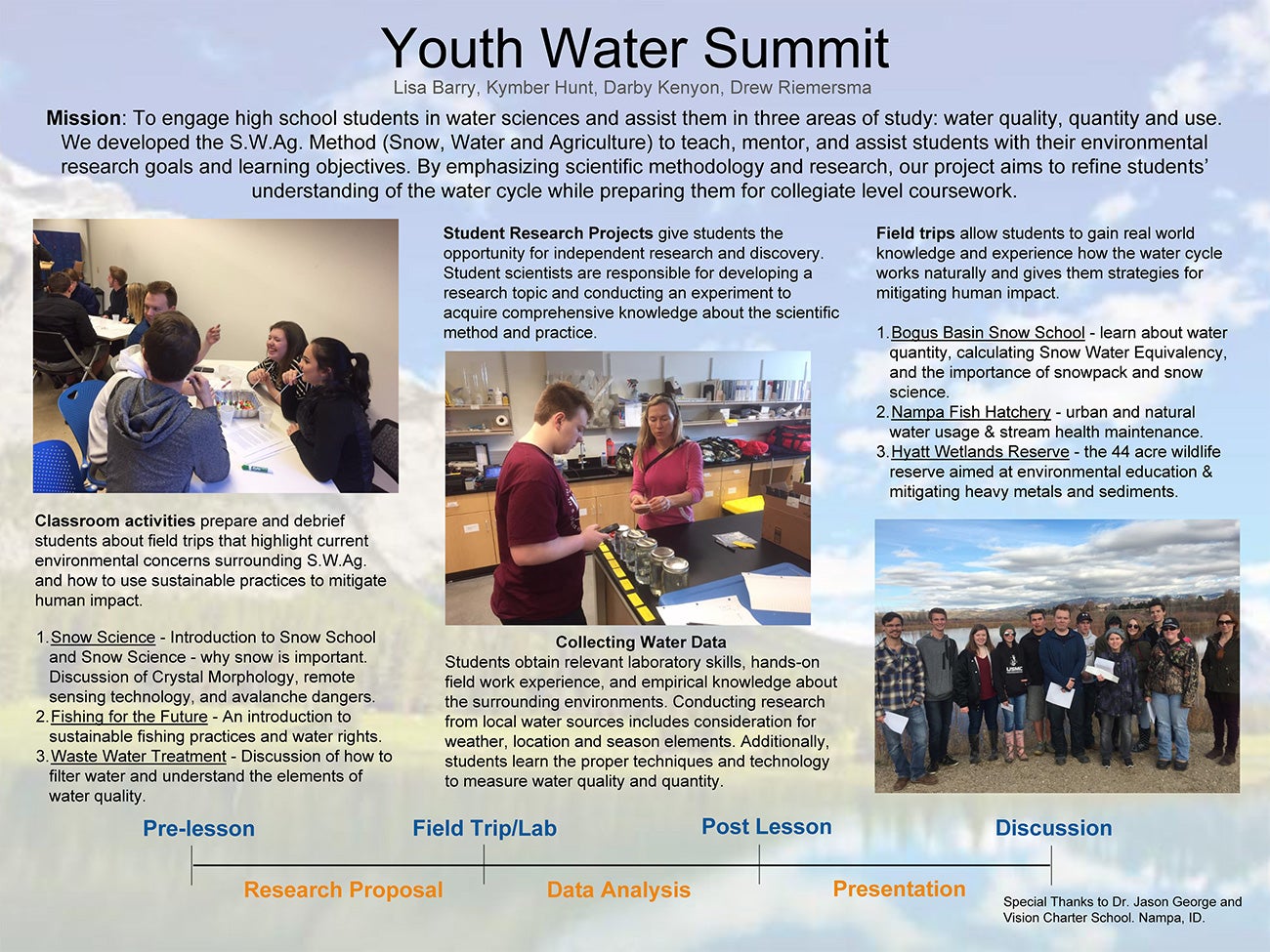Youth Water Summit

Lisa Barry, Kymber Hunt, Darby Kenyon, Drew Riemersma
Mission
To engage high school students in water sciences and assist them in three areas of study: water quality, quantity and use. We developed the S.W.Ag. Method (Snow, Water and Agriculture) to teach, mentor, and assist students with their environmental research goals and learning objectives. By emphasizing scientific methodology and research, our project aims to refine students’ understanding of the water cycle while preparing them for collegiate level coursework.
Classroom activities
Classroom activities prepare and debrief students about field trips that highlight current environmental concerns surrounding S.W.Ag. and how to use sustainable practices to mitigate human impact.
- Snow Science – Introduction to Snow School and Snow Science – why snow is important. Discussion of Crystal Morphology, remote
sensing technology, and avalanche dangers. - Fishing for the Future – An introduction to sustainable fishing practices and water rights.
- Waste Water Treatment – Discussion of how to filter water and understand the elements of water quality.
Student Research Projects
Student Research Projects give students the opportunity for independent research and discovery. Student scientists are responsible for developing a research topic and conducting an experiment to acquire comprehensive knowledge about the scientific method and practice.
Collecting Water Data
Students obtain relevant laboratory skills, hands-on field work experience, and empirical knowledge about the surrounding environments. Conducting research from local water sources includes consideration for weather, location and season elements. Additionally, students learn the proper techniques and technology to measure water quality and quantity.
Field Trips
Field trips allow students to gain real world knowledge and experience how the water cycle works naturally and gives them strategies for
mitigating human impact.
- Bogus Basin Snow School – learn about water quantity, calculating Snow Water Equivalency, and the importance of snowpack and snow
science. - Nampa Fish Hatchery – urban and natural water usage & stream health maintenance.
- Hyatt Wetlands Reserve – the 44 acre wildlife reserve aimed at environmental education & mitigating heavy metals and sediments.
Special Thanks to Dr. Jason George and Vision Charter School Nampa, ID.